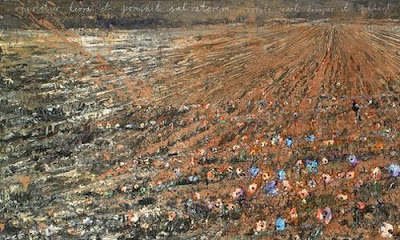It's good to hear about things like this going on in New Orleans...“Prospect.1 New Orleans,” - Biennial opens Nov. 1, up throuhg Jan.18th, showing the work of 81 artists in 20 museums, art centers and public spaces around the city.
...Billed as the largest exhibition of contemporary art ever held on American soil, the biennial is intended to help restore the cultural vibrancy of a city that remains on its knees three years after Hurricane Katrina.
With a star-filled roster of 81 artists and a projected 50,000 visitors from out of town, it may indeed bring benefits to New Orleans. But it is already clear that the arrangement has not been one-sided, and the New Orleans contribution has been rich. With its history of destruction and rebirth, artistic triumph and economic struggle, this crumpled crescent of a city provides a singular interpretive context that acts as a resonance chamber.
Some of the art refers directly to Hurricane Katrina, like Ms. Mutu’s “ghost house,” which sits on the property of an elderly woman whose attempts to rebuild were stymied by a vanishing contractor. But most of it does not have to.
In a shedlike community center a few blocks from the ghost house, the New York artist Janine Antoni has deposited a “soft wrecking ball” made of lead and scarred by the act of demolition. Nearby, the Chilean artist Sebastián Preece has excavated the foundation of a Lower Ninth Ward house and transplanted it elsewhere.
Adam Cvijanovic, another New York artist, has taken a page from traditional New Orleans style and, in an unused house, installed a custom wallpaper that presents a lavish scene of a waterlogged swamp with no humans in sight. At the United States Mint in the French Quarter, Stephen G. Rhodes, from Los Angeles, is building a Hall of Presidents in which the presidents themselves are largely absent.
Other pieces mine the city and its history. The Thai artist Navin Rawanchaikul will present the jazz funeral that was never held for Narvin Kimball, the banjo player for the Preservation Hall Jazz Band, who died in March 2006 in Charleston, S.C., where he went after the storm. Skylar Fein has recreated a French Quarter gay lounge that burned in a suspicious fire in 1973, killing about half the patrons.
Miguel Palma, a Portuguese artist, is building a modified Higgins boat, a World War II vessel manufactured in New Orleans that, in Mr. Palma’s version, contains a mini-tsunami. “Instead of war games, you have rescue games,” he said.
In this way New Orleans has become a collaborator, instigator and subject. Residents have volunteered by the hundreds to act as docents, provide exhibition sites (admission to all events is free) and assist the artists. Dan Cameron, the impresario behind Prospect.1 and a former senior curator at the New Museum in New York, said that as he was planning the biennial, a friend frequently reminded him of a quotation from Bob Dylan’s “Chronicles”: “Everything in New Orleans is a good idea.”
Prospect.1, Mr. Cameron said, is “just 81 people running around with good ideas, and basically everyone they meet goes, ‘Oh yeah, sure, I’ll help.’ ”
“It is American,” he continued, “but it’s no longer what we think of as American — it’s drop what you’re doing and go do what your neighbor’s doing.”
This is, after all, the city of spontaneous parades.
 The Boy With Green Hair
The Boy With Green Hair Exodus Into Space
Exodus Into Space The False Eyelid
The False Eyelid Hot springs, Bad Blumau (Austria)
Hot springs, Bad Blumau (Austria)













































